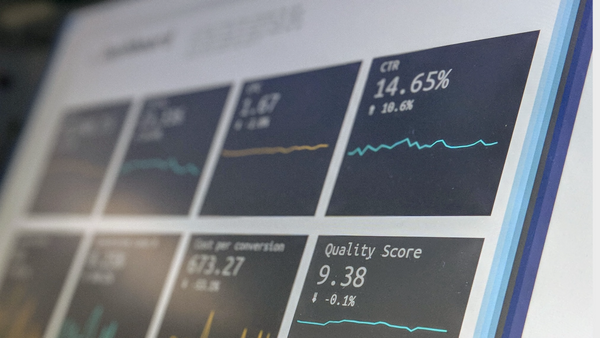Product Research is key for scaling your amazon business
Guest post by Miloš Ćulafić of AMZ Scout | November 19, 2018 | Estimated read time 6 min
E-commerce is slowly replacing retail as people get more accustomed to doing most of their shopping online. With the emergence of Fulfillment by Amazon (FBA), starting an online sales business is easier than ever before. FBA allows for greater efficiency, for both resources in time. When selling through FBA, you don’t have to worry about storage space, deliveries, or even returns. Simply focus on bringing in and selling quality inventory.
Scaling your Amazon business can be done more rapidly than with a standard business model. Whether you’re selling five items a month or 50,000, your overhead stays virtually the same. With FBA, the only real fixed cost is your monthly professional selling plan, which is only $50 each month. Other costs such as fulfillment and product costs are dependent on your volume. Your main goal will always be generating more sales and finding profitable products.

Reaching a Product Plateau on Amazon.com
Let’s say that you have a product or a few of them, and you’ve done everything right since launching. That means that your listings are optimized and that you have achieved some decent organic rankings on some of your relevant keywords. This means you likely have a steady stream of sales.
Eventually, you will start to notice that the amount of effort you put in to raise your daily sales average from 25 to 27, for example, is much more substantial than it was to raise it from 12 to 20. You might be in a position where you cannot remove any keywords from your listing to replace them with new ones since the ones you have are doing a good job already.
Experimentation is key when it comes to raising your sales however, it’s much easier to experiment and take risks when you are not making a lot of sales. If you have already reached a decent level of sales, experimenting can threaten the success you already have. You can always try to run discounts and giveaways or start approaching influencers on social media or YouTube to promote your product. All of those approaches are usually costly and time-consuming.
This is the plateau you will reach if you did your job well as an Amazon seller. It is important to understand that this doesn’t mean that the maximum sales potential for your product has been reached. It simply means that you’ve reached a stage where your product will be fine with only occasional intervention. There are always more and more people coming to Amazon and making it their primary place for shopping, so your sales can still grow. Bringing your product to this stage only means that you can more productively invest your time and energy into finding new products!

The Learning Curve of Adding New Products
Let’s look at finding and launching a product as a skill, a skill you can develop. As you grow as an Amazon seller you will get better at it. You will get to learn from your mistakes and know what actions are worthwhile and which ones are wasting time. Finding your second product will be easier, as you will have experienced some of the difficulties and learned from them.
Once you have your first successful product in hand, you will have extensive knowledge of a niche and Amazon in general. Product research within this niche is a natural extension for future product. Your growth in future products should also occur more quickly. For instance. While it might have taken you six months to get to five sales a day on your first product, it may take only a fraction of that time for your next item. This increase in efficiency also helps with quickly scaling!
When one product plateaus, you will be able to quickly and easily pivot into new items. Many large successful sellers on Amazon continue to grow by constantly adding new products. There are many successful sellers that manage hundreds of products with minimal staff.

Master the Different Approaches to Adding New Products
Continuing to add new products is the best approach for steady growth. Your experience with your first product should give you guidance on what you are looking for in terms of sales rank, reviews, listing age, etc. When expanding your product line, there are a number of different options.
Add a variation to an existing product
This is a natural first step and is ideal if the conditions are right. If you notice that similar products with a different size, color, or print are succeeding, a variation may be a great option. Similarly, if any of your competitors offer numerous variations, this is another good indicator. The benefit of creating a variation is it gets to piggyback off the listing of your current product. Your variation will already rank well for many important keywords, by association with your initial product.
It is similarly simple on the supply side. You will likely be able to use your current supplier, thus avoiding the selection and sampling process again. When possible, creating a variation is the easiest type of new product to add to your catalog.
Create a new product in your broader niche or department
This option is a little more difficult. If you notice that best seller ranks in your niche are not very high in general, this means the broader niche may be ripe for the taking. Similarly, if not even the best selling product in your micro niche has a best seller badge, it means other items within the broader niche or department are having better sales.
One natural expansion is by adding a product that could be bought with or used with your current item. It will often be from the same department, and complementary items can lead to quick growth. You can also consider bundling these items to create even more growth. Much like with variations, your current manufacturer might also create a similar complementary item, again saving you time on the supply end. Sometimes, you can get good product ideas by talking with your manufacturer about all the items they produce.
Or go in an entirely new direction
This is more of a leap of faith, but with hard work and experience, it can make perfect sense. You should have a strategy developed as a seller: low volume high-profit items, high volume low profit, etc. This will inform your decision for which products are worth trying for you. There will always be risks when jumping into a new area, so small batches are advisable whenever possible.
If you want to continue to grow your Amazon business, adding new products will likely be important. There are sellers that add new products weekly. The more experience you get, the easier it gets. As you add more products quickly, you get a life cycle for new items. You will learn to quickly reject the losers, and pump energy into the promising items. Continuing to go through these cycles will refine your processes and help you maximize your FBA revenue and scale your company.
The foundation for this strategy and approach is to do product research on a regular basis. AMZScout has created the best set of software tools for product research, and we have extremely successful sellers among our 100,000+ users. We created our software, to simplify the product research phase and help Amazon sellers get the best results. For more information visit AMZScout.net.
©2018 PingPong Global Solutions Inc. All rights reserved. Terms & Privacy










